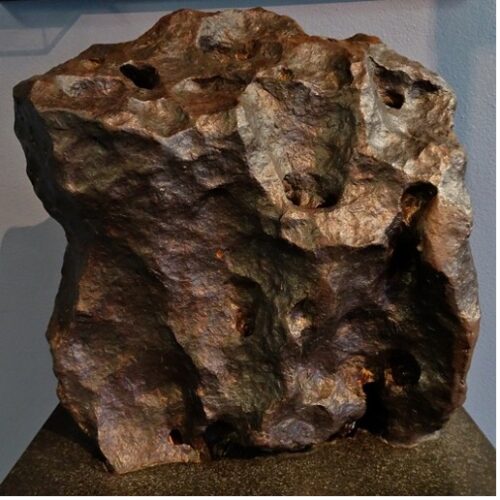Image courtesy of Flickr.
Within the expansive solar system, there are bodies of numerous types and sizes, and our understanding of them is far from complete. However, a key tool toward furthering our understanding of our own planet Earth and other bodies in the solar system is the study of magnetic fields. In general, the magnetization of a body in space can tell us something about how it formed, what it is made of, and how it has cooled and evolved through time.
Larger bodies like planets are believed to have been formed from the collisions and eventual conglomeration of smaller bodies called planetesimals. By studying planetesimals, scientists can apply those findings to larger planets, which are far more difficult to directly study. Building upon existing models, researchers from Yale’s Department of Earth & Planetary Sciences developed a new model to understand magnetism in planetesimals.
There is evidence that the planetesimals are magnetized based on the analysis of meteorites, which are fragments of planetesimals that made it to the Earth’s surface. Magnetization of planetesimals implies they were already segregated (or differentiated) like mini-planets into a metallic core (in which the magnetic field is generated) and rocky mantle and crust, even before they accreted to make bigger planets.
Certain conditions must be present for a body to be able to generate a magnetic field. “To get a magnetized body, you need an electrically conductive fluid—like molten iron in the core—and the fluid needs to be moving at a fast enough rate to generate a magnetic field,” said Elvira Mulyukova, a co-author of the paper published in Physics of the Earth and Planetary Interiors. This motion is referred to as dynamo activity. “There also needs to be a solidifying, cooling crust at the surface that can record that induced magnetic field,” Mulyukova said.
The top of metallic cores in planets and planetesimals will crystallize over time to a solid material, making that region heavier and causing it to sink downward—a process known as delamination. When the solid material drops off, it tends to do so in big blobs, and when these blobs disconnect, they form geological intrusions known as diapirs. That delamination can cause the fluid in the core to stir fast enough to generate dynamo activity and ultimately a magnetic field.
In deducing how magnetization occurs in small planetesimal cores, a primary obstacle is the inability of the smaller bodies to sustain sufficient dynamo activity. “When the solid outer shell delaminates, the falling of those solid bodies is so fast and sporadic that it would require a lot of them to be falling at the same time to induce vigorous motion of the fluid and thus generate a dynamo; moreover, they need to be falling over a long period of time for the induced magnetic field to get recorded,” Mulyukova said.
Instead, by analyzing various factors influencing dynamo activity, the researchers proposed the nature of planetesimal cores may be the cause of its magnetism. Because planetesimal cores are not pure iron, the diapirs formed are probably porous, like iron snowballs. “For a sinking porous diapir, the motion of the liquid in the surroundings and the motion of the liquid through the pores will generate enough velocity of the liquid to induce a magnetic field,” said David Bercovici, the second co-author of the paper.
Much research is left to be done to fully understand magnetism in planetesimals and how it relates to larger planets. “The presence of magnetization in an object tells us something about its differentiation history and composition, which in turn allows us to understand the types of planetesimals that likely have created our own planet,” Mulyukova said. Although bound by certain limitations and assumptions, the theoretical model produced from this study paves the way for promising future research, including developing a model for multiple diapirs, and ultimately understanding the magnetic and thermal histories of planetesimals – the building blocks of our planet.
Source:
Bercovici, D., & Mulyukova, E. (2021) Magnetization of sinking porous diapirs in planetesimal cores. Physics of the Earth and Planetary Interiors, 313, 106678. https://doi.org/10.1016/j.pepi.2021.106678

